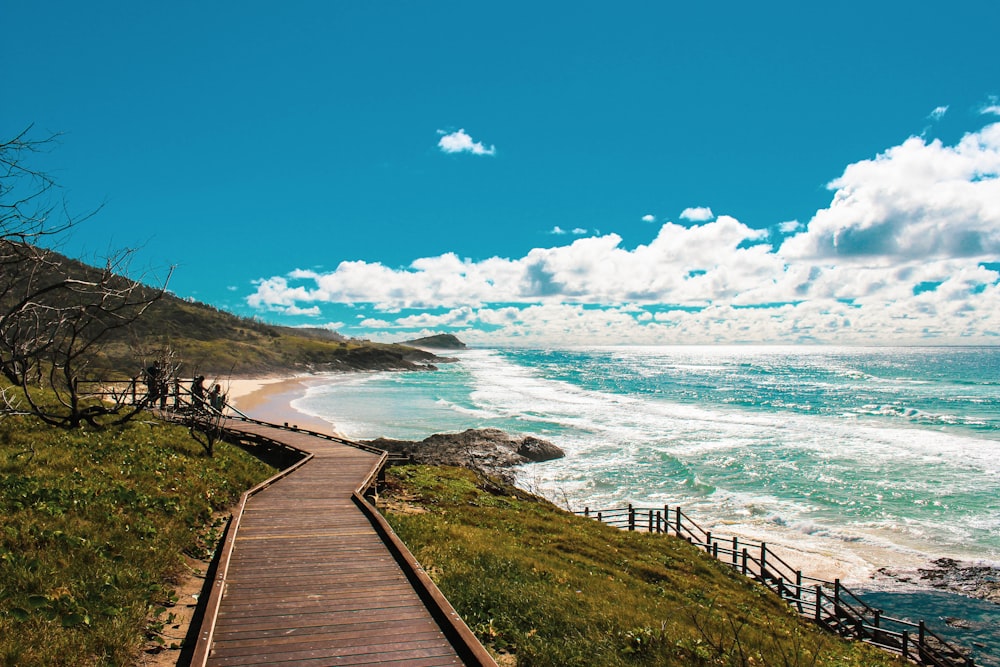Off the southeast coast of Queensland, Australia, is Fraser Island, also known as K’gari by the Butchulla people who live there. The sand island is recognized as a World Heritage Site. At more than 120 km long and 25 km wide, it is the biggest sand island in the world. It has an amazing diversity of habitats and landscapes, ranging from lush rainforests and crystal-clear lakes to immaculate beaches and towering sand dunes. Along with a wide variety of other animals, it is home to the famous Fraser Island dingoes as well as whales, dolphins, turtles, and birds.
Photo by Elijah Parry on Unsplash
Fraser Island is a popular destination for nature lovers and adventure seekers, who can explore the island by 4WD, hiking, camping, fishing, kayaking, and more. However, visiting Fraser Island also comes with some challenges and risks, as the island is a wild and remote place that requires careful preparation and respect. Here are some of the dangers that visitors should be aware of and how to avoid them.
Using a vehicle in sand
There are only sandy, sometimes narrow, and treacherous routes on Fraser Island instead of sealed ones. A 4WD vehicle with high clearance and low range capacity is necessary for driving on sand, along with a current driver’s license. It also takes some expertise and experience to drive on sand because the surface makes it easier to get damaged, bogged down, or stuck. In order to avoid the soft sand and saline water, visitors should always verify the tide times and drive on the beach only during low tide. In addition, they must to observe traffic laws and speed restrictions while keeping an eye out for wildlife, people, and planes that use the beach as a landing strip.
Shark assaults
The waters surrounding Fraser Island are home to a variety of shark species, including the tiger and bull sharks, which may be quite hazardous. Although they are uncommon, shark attacks occasionally occur, particularly in the island’s eastern waters. Instead of swimming or surfing in the ocean, visitors should take use of the refreshing and safe freshwater lakes and rivers. If kids do go into the ocean, they should swim in groups, keep near the coast, and stay out of deep or muddy water. In addition, they should abstain from going into the water if they are menstruating or have any wounds, as well as wearing jewellery or clothes that is too flashy or brilliant.
experiences with dingos
The largest and most genetically diversified population of purebred dingoes in Australia can be found on Fraser Island, home to roughly 200 of these animals. Inquisitive and opportunistic by nature, dingoes are wild dogs that may become dangerous to people and their pets if they feel frightened, hungry, or irritated. It is forbidden for visitors to feed, approach, or otherwise deal with dingoes since doing so may cause them to lose their fear of people and turn hostile. They should never leave children or pets alone, and they should protect their food and possessions. They should maintain their composure, stand up, and back away gradually if they come across a dingo. In the event that the dingo turns hostile, they should defend themselves by hurling rocks or sticks and make a help call.
Additional risks There are additional possible risks on Fraser Island that tourists should be aware of, including: The leaves of stinging trees are covered in microscopic hairs that have the ability to pierce the skin and cause excruciating agony. They are identified by their huge, heart-shaped leaves with serrated edges, and they are found in the island’s rainforest regions. When guests do touch them, they should keep their hands off of them, remove any hairs with tweezers or sticky tape, and treat the affected area with vinegar or ice.
Spiders and snakes: The island is home to a number of poisonous spiders and snakes, including the redback, funnel-web, red-bellied black, and eastern brown snakes. Though they tend to be timid and stay away from people, they may bite if they feel uneasy or threatened. Wearing closed shoes and long pants is advised. They should also refrain from exploring around rocks or logs and from strolling through long grass. Prior to wearing them, they should also inspect their bedding, clothes, and shoes for spiders. They should get medical help right away if they are bitten.
Fire: Although fire is a normal and vital component of the island’s ecology, it can also pose a risk to tourists, particularly in the dry season. Only fires in approved fireplaces or fire rings should be started by guests, who must abide by any fire bans and restrictions. In addition, they must always ensure that a fire is totally extinguished before leaving it unattended. They should also be on the lookout for bushfire warning signs and, in the event of an emergency, adhere to the authorities’ instructions.
Fraser Island is a stunning and distinctive location that provides guests with an experience they won’t soon forget. It is a location that calls for caution and attention though, as there are a few undiscovered hazards that could endanger your journey or perhaps cause injury. Visitors can enjoy the island safely, responsibly, and contribute to its preservation for future generations by being prepared, knowledgeable, and kind.




